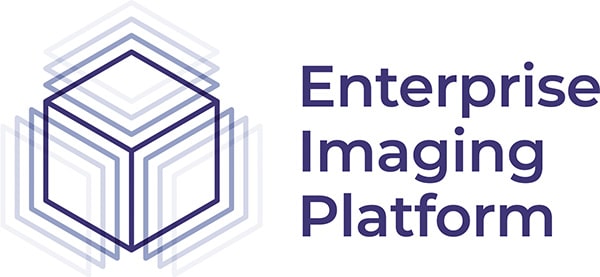
Interview with Jason Knox,
Solutions Manager, Enterprise Imaging at Agfa HealthCare
The true cost of keeping the imaging status quo
Why and how to consolidate your image management with Enterprise Imaging
As imaging and imaging IT became increasingly fundamental to modern healthcare, a broad variety of systems and technologies proliferated across departments, specialties and facilities. As a result, today the hospital or network finds itself with a legacy assortment of disparate, standalone systems with different capabilities and functionalities. It’s a situation rife with duplication, fragmentation, risk and inefficiency all leading to skyrocketing costs.
At the same time, diagnostic and clinical users are increasingly demanding a complete patient imaging record – a nearly impossible task within this fragmented environment, even for the most skilled system administrator.
To overcome the challenges, you have to be ready to trade in the imaging ‘status quo’ of the individual, isolated silo, for a consolidated approach such as Enterprise Imaging.


What is driving change in imaging systems?
There are three cost-related forces that are driving healthcare providers away from traditional departmental imaging systems, towards a unified Enterprise Imaging ecosystem: economics, operations and clinical needs.
1. Economic drivers
From a cost perspective, it is very inefficient to buy, implement, deploy, integrate and support multiple imaging systems across multiple departments. Whether the disparate imaging systems have ‘grown up’ in the hospital, or have been ‘inherited’ from mergers or acquisitions of other facilities, their basic purpose is the same: to acquire, store and display images.
Keep in mind that the money and time you spend on managing and updating these siloed systems, as well as on duplicated storage, could be put to other investments with a higher value to patients and other stakeholders.
The difficulty of connecting and integrating each and every system can also drive up costs and effort and results in complex integration messaging. In addition, Enterprise Imaging can also close existing gaps related to some imaging studies (ie mobile point of care devices) not being stored, or billed for, at all.

2. Operational drivers
With a siloed approach, each system requires staff who are trained and skilled in its maintenance and/or interface. Staff as well need to be trained on multiple user interfaces – time and effort that could be better spent on skills more related to enhancing patient care.
Synchronizing and normalizing systems with varied capabilities is almost impossible, and auditing becomes very complex. Furthermore, you have to develop, test and execute multiple High Availability (HA), Disaster Recovery (DR) and Business Continuance (BC) plans for each and every system.

3. Clinical drivers
On the clinical side, older departmental PACS no longer meets the needs of the healthcare facility or its diagnostic users. Physicians and clinicians both expect more and easier access to all images.
Switching from system to system to find, compare and diagnose images and then make treatment decisions, is cumbersome and inefficient. An imaging infrastructure that supports care providers and allows them to focus on adding value, rather than spending their time with different workstations or user interfaces, also increases the satisfaction of these in-demand professionals, improving retention and helping you to attract new, highly skilled talent.



Why Enterprise Imaging?
Three advantages of converged image management
As I said, all these image systems have the same basic purpose: to acquire, store and display images. The challenges of a siloed approach can thus be overcome with a consolidated infrastructure that converges image collection, storage, management and sharing – such as Enterprise Imaging.
By delivering a highly scalable and centralized platform, Enterprise Imaging can help you significantly reduce the technical complexity, IT footprint and cost of your imaging ecosystem, while increasing operational efficiency. And enhancing physician satisfaction and patient care. Let’s look at how, specifically, a unified and converged Enterprise Imaging approach can help:
1. Reduce complexity and total cost of ownership (TCO)
Enterprise Imaging enables you to take advantage of lower-cost storage alternatives such as tiered or cloud models. Using information lifecyle management (ILM) policies, you can optimize your storage utilization, and eliminate duplicated storage capacity.
With a centralized system management, managing interfaces and integrating new modules or applications takes less time and cost. Security and data privacy are also centralized, enabling you to prevent gaps and reduce the risk of breaches, while also simplifying the requirements for disaster recovery.
Finally, Enterprise Imaging supports non-orders based workflows including point-of-care ultrasounds and clinical photography. Integrating these into your billing systems and workflows reduces the risk of missing out on payments or reimbursements.
2. Increase operational efficiency
By standardizing imaging capture, storage and quality across the enterprise, including at the point of care, you increase the long-term value of all medical images, while reducing the costs and risks of duplicate exams. And as Enterprise Imaging supports the latest industry standards and advanced integrations (such as APIs), it simplifies your integration of current and future applications.
Furthermore, converging and streamlining IT and administration reduces your staff and training costs, while enabling you to anticipate health service demand and optimize your resource planning, avoiding under-or over-staffing.
3. Enhance clinical care and satisfaction
A true Enterprise Imaging platform harmonizes workflows, letting you create a patient-centric approach to care delivery. It enhances and fosters information sharing, multi-disciplinary cooperation and patient engagement, measurably improving both staff and patient experiences.
A longitudinal patient imaging record eliminates redundancies while enriching the strength and impact of multi-disciplinary teams; flexible workflows adapt to the needs and preferences of each specialty and user.
And by image-enabling the EHR and Portals with an intuitive yet powerful viewer, Enterprise Imaging helps improve collaboration and promotes referrer satisfaction – and loyalty.
Building a tailored and robust Imaging strategy
Each hospital’s journey to Enterprise Imaging will be unique, but building a robust Imaging strategy will define your path to achieving your goals in a smooth and efficient way:
- Build your strategy step by step. You can find some inspiration in our case on ‘One hospital’s 5-step journey to Enterprise Imaging’ below.
- Map out your legacy systems: what is in place, when do contracts run out, what needs to be replaced or upgraded?
- Define your immediate economic, technical, operational and clinical priorities, create short- and long-term plans to incorporate additional imaging services and use cases, based on priority, budget and resources.
- These ‘immediate priorities’ will depend on your enterprise’s objectives and current situation, but take a close look at areas where:
- IT resources are over-stressed or over-budget,
- clinical productivity is struggling,
- financial reimbursements are being missed,
- referrer loyalty is lagging,
- there is significant staff or patient dissatisfaction.
- Continuously future-proof your platform by adding modules that meet new or evolving needs, and that make the most of your existing investments, such as Artificial Intelligence, for example.
Use case:
One hospital’s 5-step journey to Enterprise Imaging
In this example, a two-site general hospital that is part of a regional network takes a progressive, phased approach to transforming to Enterprise Imaging:
Step 1: Radiology convergence
By implementing the single, sophisticated Enterprise Imaging platform, the hospital first converges its radiology imaging ecosystem. Enterprise Imaging offers PACS, advanced image processing, reporting, clinical applications, collaboration tools, analytics and more. Combined with its powerful workflow engine and intuitive use, this helps the hospital maximize productivity for radiology, while keeping IT costs low.
Step 2: Cardiology convergence
Now the hospital is ready to converge cardiology imaging: Enterprise Imaging integrates the entire cardiology service into a single system. By integrating third-party solutions, the cardiology department can make the best use of services such as Cath lab, CT, MRI, ultrasound, nuclear medicine and ECG.
Step 3: Enterprise VNA and the XERO universal viewer
The hospital enriches its consolidated platform with an enterprise-level VNA that reaches beyond the ‘traditional’ imaging departments of radiology and cardiology, to include multimedia data from other specialties. Combining the VNA with the XERO universal viewer, the hospital gives care providers access to the multimedia patient information they need, anywhere, anytime – including at the point of care.
Step 4: Other service line convergence
Enterprise Imaging can now drive the imaging workflows of other departments and service lines in the hospital. It provides flexible workflow options for exams captured in any department. Workflows are standardized, and all images are stored centrally in the VNA, creating a permanent imaging record.
Step 5: Cross-enterprise image sharing
As part of a regional network, the hospital can use Enterprise Imaging to share images within its network. Functions such as routing and shared workflows support not only the hospital, but the entire network to manage data.





